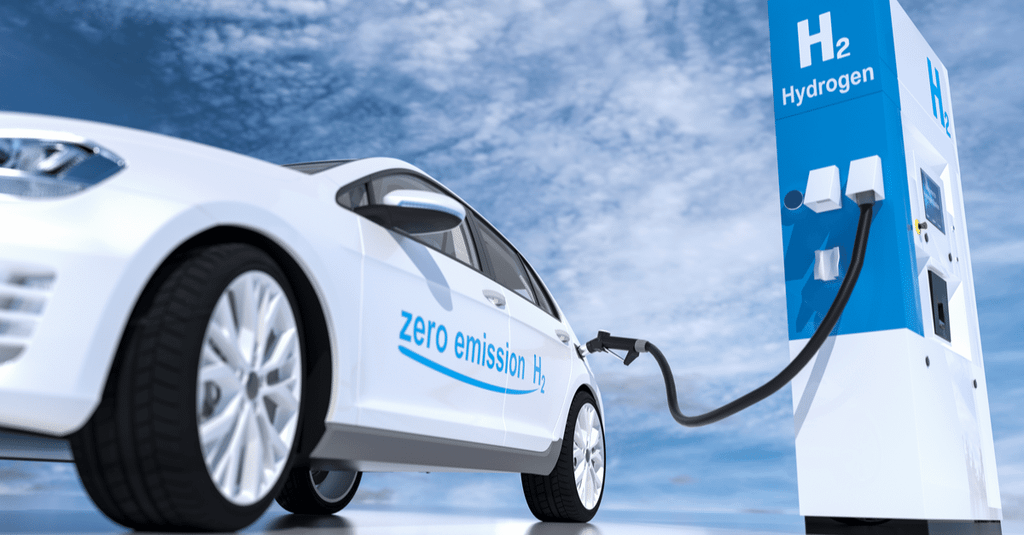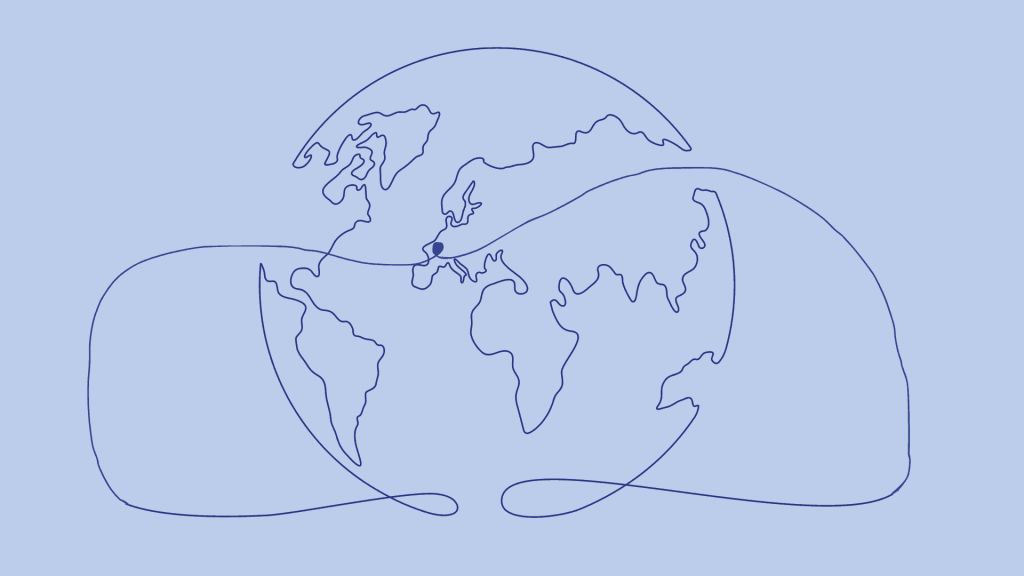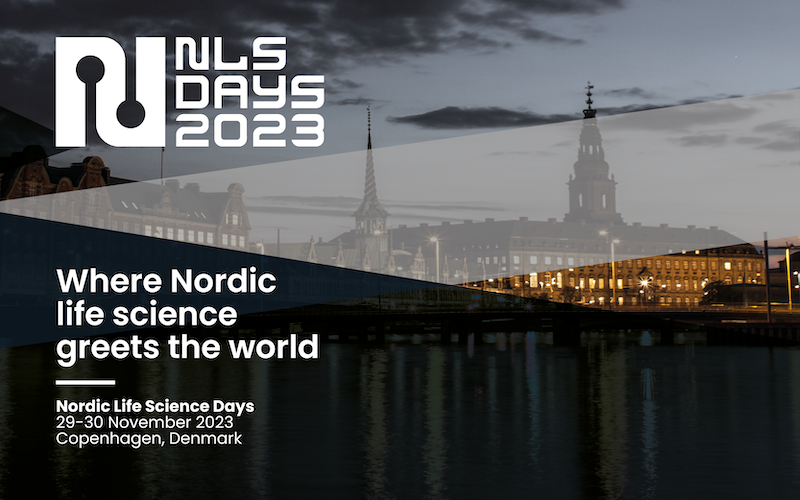- Market Info
Hydrogen mobility: France and the Nordics are playing big and complementary

Electric mobility has become an essential issue in the French strategy to strongly reduce emissions and accelerate the energy transition. The government has designed the “France 2030” strategy to support the change and the rise of the electric vehicle market through financial incentives.
€9,1 billion for low-carbon hydrogen in France by 2030
France wants to install two electrolyzer gigafactories to produce carbon-free hydrogen on a massive scale and consolidate its hydrogen industry by 2030. Produced by the electrolysis of water, hydrogen can come from alternative sources such as wind or solar power or even from nuclear sources, and it can also be stored.
Read more: Watch the replay of our webinar about the French hydrogen ecosystem in the Pays de la Loire Region!
This mass-production of hydrogen by electrolysis will save 6-megaton of CO2 by 2030. Carbon-free hydrogen could even meet 20% of overall energy demand by 2050. In addition, it would reduce annual CO2 emissions by around 55-megaton and represent 12% of households’ heating and electricity demand and 10% of the industry.
All in all, France will invest €9.5 billion in new low-carbon energies, of which €9.1 is part of the national strategy for low-carbon hydrogen, ahead of Germany and Spain! Indeed, the France Recovery Plan had already allocated €7.2 billion for hydrogen. France 2030 will accelerate this strategy by adding €1.9 billion.
This investment has set three priorities: decarbonizing the industry (with a carbon-neutral objective for 2050), developing hydrogen mobility, and supporting and developing France’s research capacity. The government aims to create a fully integrated and competitive sector by creating 50,000 to 150,000 jobs.
Read more: Decarbonization of the French economy, an ambitious project with key objectives
France welcomes all businesses involved in low-carbon mobility
Hydrogen will fulfill mass transportation. The transport sector is indeed the leading source of CO2 in mainland France with 30.1% of CO2 equivalent emissions, ahead of agriculture (19.6%), tertiary residential (18.5%), and manufacturing industry and construction (18%) (Citepa data, Secten report, 2020 edition).
“I am certain that hydrogen is the right solution for public transport in the broad sense. It is going to be the solution for the decarbonized aircraft. [For planes with a capacity of 80 to 100 people, hydrogen can be a perfect solution,” says the French Minister of Economy, Finance and Industrial and Digital Sovereignty, Bruno Le Maire. “For trains, […] hydrogen trains already exist. They already run. It is profitable and safe,” says the Minister. “Hydrogen can also be a solution for small or medium-sized commercial vehicles. It can also be the case for company fleets.”
Read more: Which electric mobilities in France in 2022?
For example, from five vehicles in 2015, Hype’s taxi hydrogen fleet will have more than 600 vehicles by 2021. The company has set itself a challenge of 10,000 hydrogen cars by 2024 (the year of the Olympics in Paris!). At the same time, the largest hydrogen station in Europe will open in June at Porte de Saint-Cloud, in Paris. HysetCo has just built a production and distribution station capable of delivering one tonne of hydrogen per day. It will provide taxis, private vehicles, and heavy goods vehicles with this fossil-free fuel.
If Norway relies on hydrogen in the maritime sector…
In Norway, many initiatives are already underway on hydrogen as a “fuel of the future.” After signing a letter of intent, the companies Golden Energy Offshore Services and Gen2 Energy will work together to use hydrogen as a fuel for the maritime sector. They see this resource as key to decarbonizing this sector and representing a competitive alternative that can compete with other fuels.
HYON, Gen2 Energy, and ASCO Norway have applied for funding from Enova, the Norwegian governmental company responsible for promoting green energy, for building a hydrogen hub for maritime transport in Nordland. The objective is to produce green hydrogen on a large scale at a competitive price, fuel ships in the Nordland region, and develop zero-emission maritime transport.
Everfuel, a Danish company that supplies green hydrogen, and Greenstat, a Norwegian energy company, will build a hydrogen hub in Kristiansand, Hydrogen Hub Agder. The project is carried out as a joint venture between the two companies. The project’s first phase will build hydrogen production facilities with a 20-megawatt electrolyzer. In contrast, the second phase will include the installation of a 60-megawatt electrolyzer. The objective is to provide hydrogen energy to the maritime sector and allow the decarbonization of this sector. Several maritime transport companies have expressed their interest in this project. They would like to benefit from the hydrogen coming from this hub.
Read more: Ericsson’s Head of France advises Nordic investors: “Don’t hesitate and run for it!”
…France is focused on the growing markets of the South
France is a historic economy in terms of mobility. Major manufacturers are now dealing with new players in the hydrogen sector. For example, Renault has released details of an electric-hydrogen hybrid concept car, “one of the options to make electric vehicles more convenient.” Renault’s Scenic Vision design incorporates a hydrogen engine, electric motor, battery, fuel cell, and a hydrogen tank. The Scenic Vision’s 40-kilowatt hour battery is recyclable and will be produced at a facility in France by 2024. Renault’s electric-hydrogen concept illustrates how car companies are looking for new ways to develop low and zero-emission offerings that can compete with the range of gasoline and diesel vehicles.
Read more: What’s happening with La French Tech in 2022?
In addition, the young French company Hopium has decided to design a top-of-the-range 100% hydrogen car for 2025. It promises a neutral carbon footprint and a record recharging time of 3 minutes!
On the one hand, in the Hauts-de-France Region, the car manufacturer Stellantis will open a gigafactory in 2023, collaborating with TotalEnergies. The first batteries should leave the factory in 2024. The gigafactory should reach its full capacity by 2030 with 24 GWh. In total, one million batteries will eventually be produced each year, representing more than 10% of the European market, and the Gigafactory could create around 2,000 jobs in the region.
On the other side, with its gigafactory, the start-up Verkor targets the Southern European market, where the need for electric cars is expected to explode in the coming years. Sales of electric vehicles in Europe have increased significantly despite a falling global market due to the coronavirus. And while several gigafactories have already been launched in Germany and Sweden, only these two projects are currently targeting Southern Europe.
Read more: #France2030: the French strategy to support industrial startups
So, contact us for free guidance on your investments projects in France!
Article written by Samy Trabelsi





